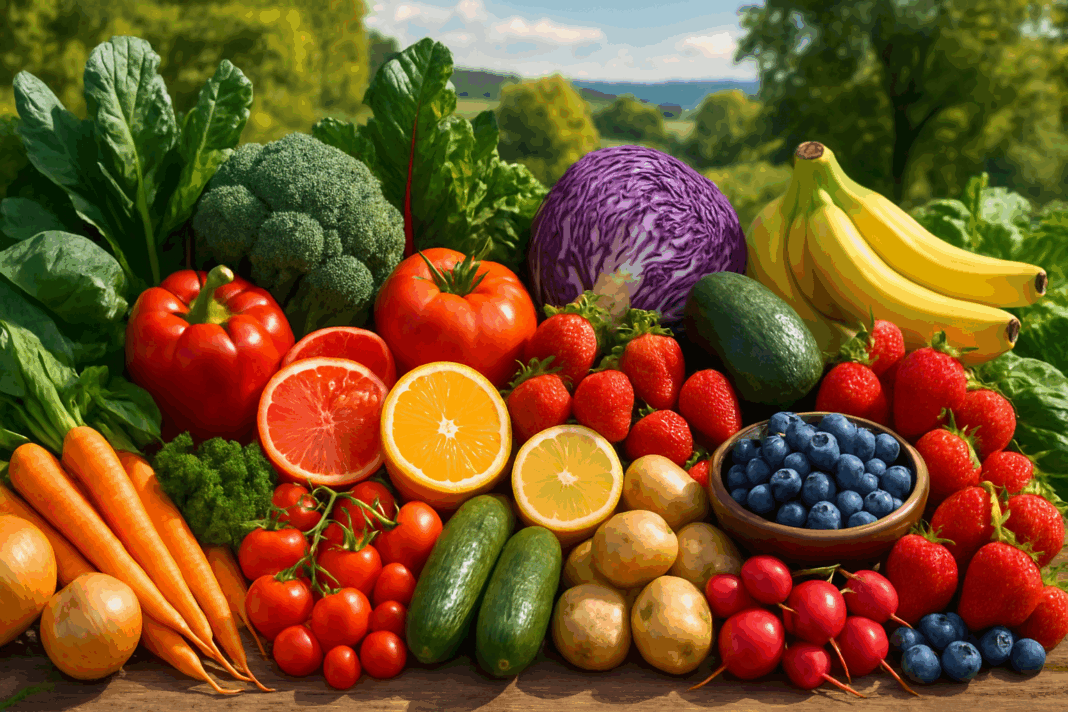The foundation of lifelong wellness often lies not in expensive supplements or exotic remedies, but in the humble produce aisle. From the radiant reds of ripe strawberries to the deep greens of kale, the most healthy fruits and vegetables are nutritional cornerstones that support everything from heart health to cognitive function. A growing body of scientific research confirms that incorporating these vibrant foods into your daily diet can offer profound benefits, from lowering inflammation and oxidative stress to protecting against chronic diseases such as cancer, type 2 diabetes, and cardiovascular conditions.
You may also like: 4 Ways to Have a Healthy Diet: Expert Tips Backed by Science for Better Nutrition and Long-Term Wellness
In this comprehensive exploration, we will uncover the best examples of vegetables and fruits that are good for you. More than just listing different veggies or their colorful counterparts in the fruit family, we will explore what vegetables are best for you according to clinical research, how they contribute to long-term wellness, and why it is important to eat them regularly. This article blends science-backed insights with practical advice to help readers cultivate an evidence-based approach to nutrition.
The Science Behind Phytonutrients and Daily Produce Consumption
Phytonutrients are biologically active compounds found in plants that offer health benefits beyond basic nutrition. These compounds, such as flavonoids, carotenoids, and glucosinolates, are abundant in the most healthy fruits and vegetables and are responsible for many of their protective effects. They act as antioxidants, anti-inflammatory agents, and even support detoxification pathways at the cellular level. Consuming a wide array of fruits and vegetables ensures a rich intake of these beneficial compounds.
Modern epidemiological studies underscore the importance of including vegetables in your diet and consuming a variety of fruits. Populations with high daily fruit and vegetable intake show markedly reduced risks of all-cause mortality. According to data published in The Lancet, a diet high in plant-based foods correlates with lower blood pressure, healthier cholesterol levels, and improved metabolic markers. It becomes clear that the most powerful medicine may indeed grow from the ground.

Cruciferous Vegetables: Potent Detoxifiers and Cancer Fighters
Among the different veggies frequently recommended by nutritionists and physicians alike, cruciferous vegetables deserve special mention. These include broccoli, cauliflower, Brussels sprouts, and kale—vegetables that are good for you not just in theory but in proven biochemistry. They contain sulfur-containing compounds called glucosinolates, which convert into biologically active substances like sulforaphane when chopped or chewed.
Sulforaphane has garnered significant attention for its ability to stimulate the body’s phase II detoxification enzymes, enhancing the elimination of carcinogens. Research also indicates that diets high in cruciferous vegetables are linked to a decreased risk of several cancers, including those of the lung, breast, prostate, and colon. Including these in your daily meals is one of the most impactful ways to improve long-term health.
For those wondering what vegetables are best for you when it comes to disease prevention, cruciferous types consistently top the list. Whether steamed, sautéed, or consumed raw in a salad, they are remarkably versatile. Furthermore, their fiber content supports gut health, which is increasingly recognized as a foundation of systemic immunity and mental well-being.
Leafy Greens: Micronutrient Powerhouses That Support Brain and Heart Health
Dark leafy greens like spinach, Swiss chard, collards, and arugula are examples of vegetables that pack an extraordinary amount of nutrition into a small calorie footprint. Rich in vitamins A, C, E, and K, as well as essential minerals like iron, magnesium, and potassium, these greens support cellular function and vascular health.
What makes leafy greens some of the healthiest fruit and veg options is their synergy of nutrients. Folate, for instance, helps lower homocysteine levels, a marker linked with increased cardiovascular risk. Lutein and zeaxanthin—two carotenoids found in abundance in spinach and kale—are not only protective for eye health but also appear to influence cognitive resilience. In fact, a study published in Neurology found that older adults who consumed more leafy greens had slower cognitive decline compared to those who did not.
From green smoothies to sautéed side dishes, incorporating leafy greens into your daily meals is an effective and affordable way to meet nutritional needs and support long-term wellness. Their high nutrient density, paired with anti-inflammatory properties, make them essential additions to a preventative diet.

Berries: Small Fruits with Massive Health Impacts
While vegetables form a critical backbone of the diet, fruits—especially berries—should not be underestimated. Blueberries, strawberries, raspberries, and blackberries are among the most healthy fruits and vegetables due to their rich content of polyphenols and antioxidants. Blueberries in particular have been studied extensively for their effects on brain health, memory, and even insulin sensitivity.
Anthocyanins, the pigments responsible for the deep hues of berries, are potent compounds that reduce oxidative damage and improve endothelial function. Randomized controlled trials have shown that daily berry consumption can reduce systolic blood pressure, lower LDL cholesterol, and enhance cognitive performance. Given these effects, it is no surprise that many experts highlight berries as a daily staple when discussing important to eat items for long-term vitality.
In addition to their nutritional profile, berries are versatile and easy to integrate into breakfast bowls, snacks, and even savory dishes. Their natural sweetness also provides a healthier alternative to processed sugars, making them a favorite among dietitians and culinary professionals alike.
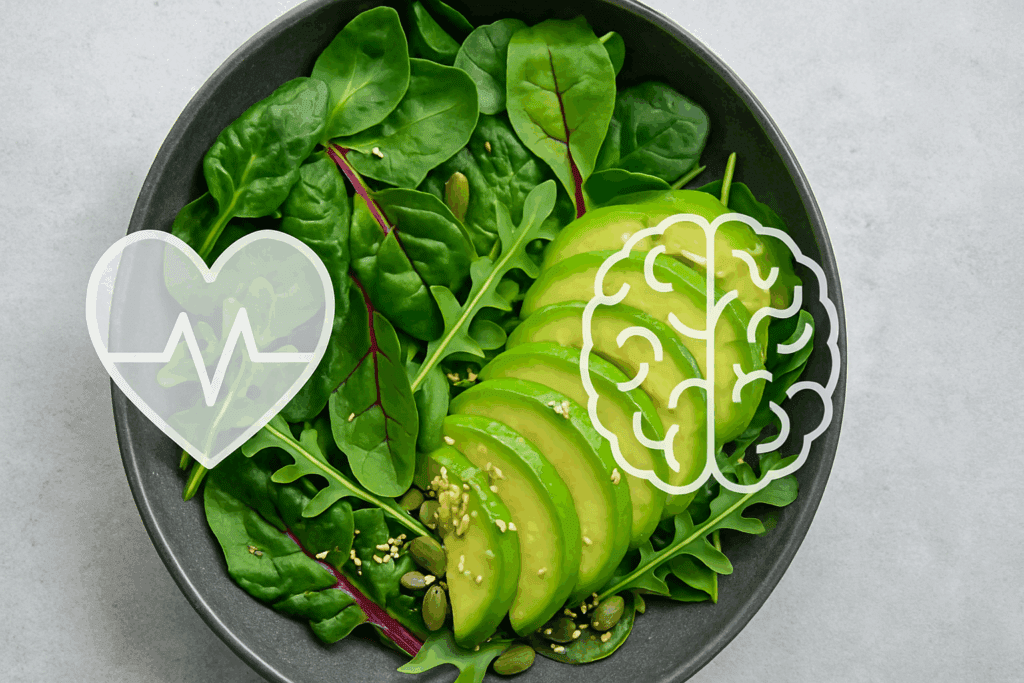
Citrus Fruits: Immune-Boosting, Skin-Loving Essentials
Oranges, grapefruits, lemons, and limes may seem common, but their health benefits are extraordinary. Rich in vitamin C, flavonoids, and limonoids, citrus fruits have been shown to support the immune system, enhance collagen synthesis, and reduce systemic inflammation. They are another class of vegetable and fruits that are good for you names to remember and reach for often.
Vitamin C acts as a co-factor in enzymatic reactions related to tissue repair, neurotransmitter production, and immune defense. Meanwhile, citrus flavonoids such as hesperidin and naringin have been associated with improved endothelial function and reduced risk of stroke. For individuals focusing on skin health, these fruits offer benefits that go beyond internal wellness, promoting clearer and more resilient skin.
Adding lemon to water or enjoying an orange as a mid-morning snack can be simple yet meaningful steps toward comprehensive health. The acid in citrus also aids digestion and enhances iron absorption from plant-based foods—a particularly relevant factor for those following vegetarian or vegan diets.
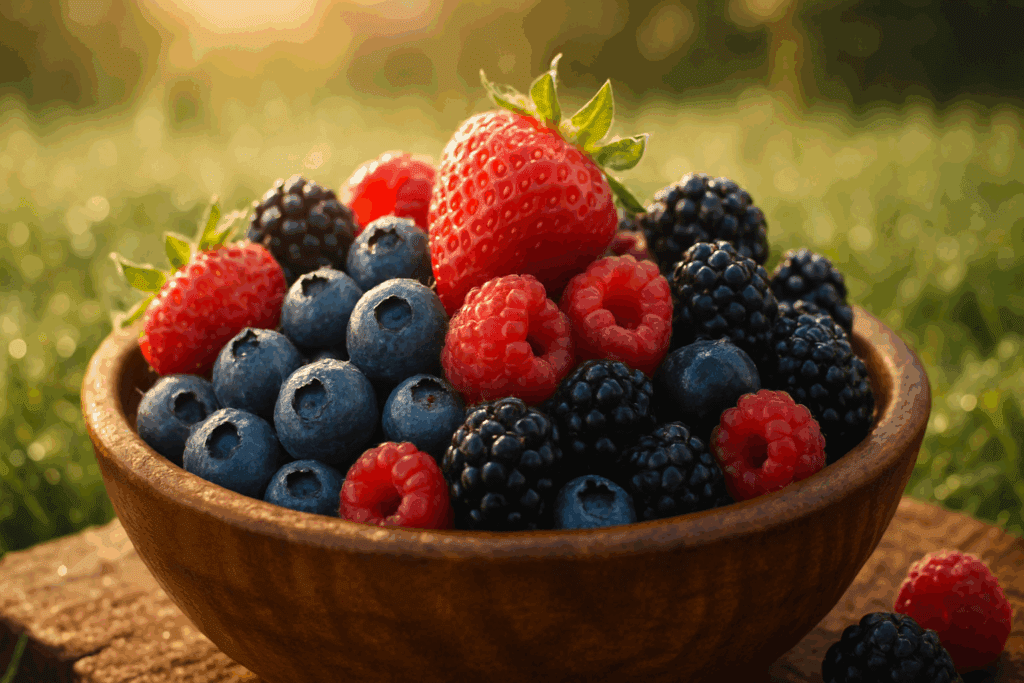
Avocados and Tomatoes: Fat, Fiber, and Phytonutrients in Harmony
Avocados and tomatoes might not often be paired in academic discussions, yet they form a dynamic duo in the realm of plant-based wellness. Avocados are a rare fruit high in monounsaturated fats, particularly oleic acid, which supports heart health by lowering LDL cholesterol and increasing HDL cholesterol. They also contain more potassium than bananas, a mineral critical for blood pressure regulation and muscle function.
Tomatoes, on the other hand, are rich in lycopene, a carotenoid that has been associated with reduced risk of prostate cancer and improved skin protection against UV damage. Cooking tomatoes actually increases the bioavailability of lycopene, making them an excellent addition to soups, sauces, and stews. Together, these two examples of vegetables (or technically fruits) provide a well-rounded nutrient profile that supports both macro- and micronutrient goals.
Including avocados in salads or spreading them on whole grain toast, and using tomatoes in cooked dishes or fresh salsas, are enjoyable and practical ways to increase your intake of the healthiest fruit and veg available year-round.
Root Vegetables: Earthy, Hearty, and Nutritionally Robust
Carrots, beets, sweet potatoes, and parsnips are nutrient-rich root vegetables that provide complex carbohydrates, dietary fiber, and a wide spectrum of antioxidants. Carrots, for instance, are an excellent source of beta-carotene, which the body converts into vitamin A—a nutrient essential for vision, skin integrity, and immune health.
Beets are rich in dietary nitrates, compounds that help relax blood vessels and improve circulation, which can enhance physical performance and cardiovascular function. Sweet potatoes offer a dense mix of fiber, potassium, and vitamin B6, while also scoring low on the glycemic index compared to other starchy vegetables. These characteristics make root vegetables particularly important to eat in balanced, whole-food diets.
Root vegetables are hearty, grounding foods that lend themselves to roasting, steaming, and blending into nutrient-dense soups. Their versatility and satiety factor make them indispensable when evaluating what vegetables are best for you over the long term.
Apples, Pears, and Stone Fruits: Fiber-Rich Staples for Digestive and Metabolic Health
Among the most underrated categories of the most healthy fruits and vegetables are apples, pears, peaches, plums, and apricots. These fiber-rich fruits contribute to digestive regularity and blood sugar control. Soluble fiber, such as pectin found in apples and pears, has been shown to lower LDL cholesterol and support the growth of beneficial gut bacteria.
Apples and pears are also rich in flavonols and phenolic acids, compounds that support metabolic resilience and reduce markers of systemic inflammation. Stone fruits, including peaches and plums, provide vitamins A and C along with a host of antioxidants that combat oxidative stress. Together, they form a class of fruits that are as functional as they are flavorful.
Incorporating these fruits into a daily meal plan can be as simple as slicing them into oatmeal, adding them to salads, or enjoying them as on-the-go snacks. When evaluating examples of vegetables and fruits to prioritize, these accessible staples offer both practicality and scientifically supported health benefits.
Understanding Variety and Balance in Daily Intake
A well-rounded diet emphasizes diversity—not just in macronutrients but in the types and colors of fruits and vegetables consumed. Each color represents different phytonutrients and antioxidant profiles, meaning that rotating your choices provides the most comprehensive health support. For example, red fruits like strawberries offer anthocyanins, while orange vegetables like carrots deliver carotenoids, and green leafy vegetables provide folate and chlorophyll-based compounds.
This emphasis on variety is especially important when considering the keyword-rich question of what vegetables are best for you. The answer often lies not in a single superfood, but in a spectrum of different veggies and fruits consumed consistently over time. From the cruciferous strength of broccoli to the antioxidant punch of blueberries, each plays a unique role.
The practice of including vegetables in your diet does not require dramatic changes—just incremental, consistent additions. Even one extra serving per day has been shown to lower risk factors for chronic disease. By prioritizing seasonal produce and aiming for a colorful plate at each meal, you not only nourish your body but also create a sustainable dietary rhythm that can support wellness for years to come.
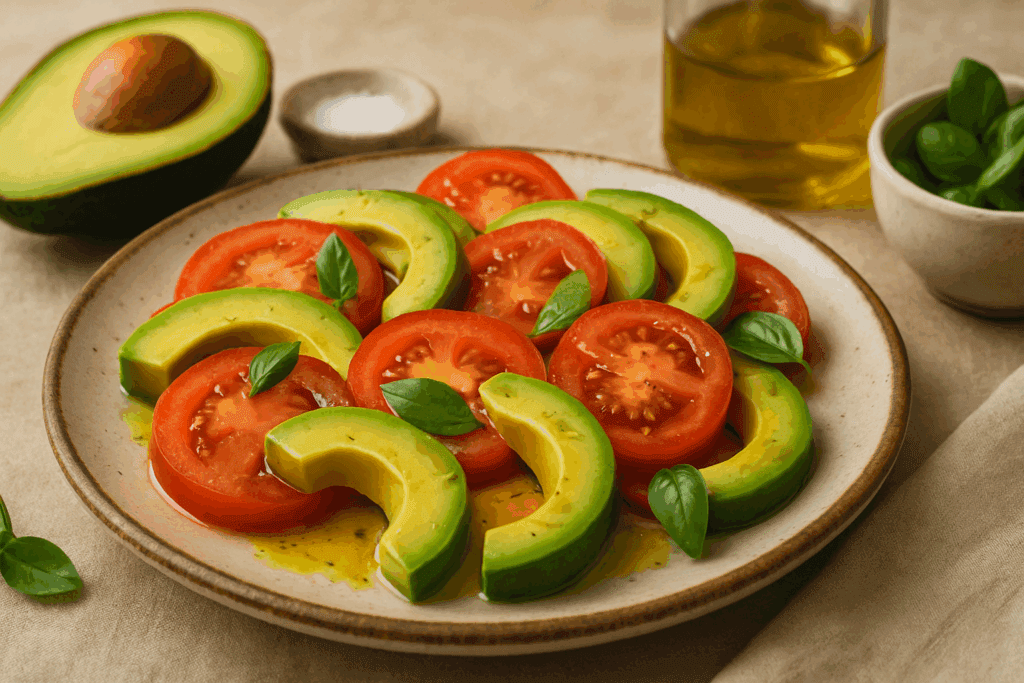
Frequently Asked Questions: Most Healthy Fruits and Vegetables for Disease Prevention and Long-Term Wellness
What are some uncommon vegetable and fruits that are good for you names people often overlook?
While many focus on mainstream options, lesser-known produce like watercress, kohlrabi, andpersimmons offer exceptional health benefits. Watercress, for example, is considered one of the most nutrient-dense foods per calorie and is packed with antioxidants that combat oxidative stress. Kohlrabi, a cruciferous vegetable, supports gut health and contains compounds that may reduce cancer risk. Persimmons, rich in fiber and vitamin A, are a seasonal gem that supports eye and immune health. Including these in your rotation expands your intake of the most healthy fruits and vegetables beyond the usual suspects.
How do preparation methods affect the nutritional value of the healthiest fruit and veg?
Cooking methods can significantly impact nutrient availability in different produce. For instance,lightly steaming broccoli preserves sulforaphane better than boiling, while cooking tomatoes increases the bioavailability of lycopene. Some fat-soluble vitamins like A, D, E, and K require dietary fats for optimal absorption, making it beneficial to pair greens with healthy oils. Overcooking can degrade heat-sensitive nutrients like vitamin C, so a balance of raw and cooked options is ideal. Understanding preparation techniques helps you get the most out of the most healthy fruits and vegetables in your diet.
Is it better to eat vegetables and fruits that are good for you names raw or cooked?
The answer depends on the specific nutrient content and your health goals. Leafy greens like spinachcan be more digestible when lightly wilted, as cooking reduces oxalates that inhibit mineral absorption. On the other hand, raw bell peppers retain more vitamin C than when cooked. For optimal benefit, alternating between raw and cooked versions of the healthiest fruit and veg ensures a well-rounded nutrient profile. This variety also enhances your gut microbiome, which thrives on dietary diversity.
How do different colors in fruits and vegetables indicate their health benefits?
Color diversity in produce isn’t just appealing to the eye—it’s a signal of varied phytonutrients. Redfruits and vegetables often contain lycopene and anthocyanins, which are known for cardiovascular support. Green varieties provide chlorophyll, folate, and lutein for eye and cognitive health. Orange and yellow options are typically rich in carotenoids like beta-carotene, beneficial for immune resilience and skin integrity. Choosing a colorful array of the most healthy fruits and vegetables maximizes health-protective compounds in every meal.
Can the healthiest fruit and veg reduce medication dependency over time?
While fruits and vegetables aren’t substitutes for prescribed medications, they can support metabolicimprovements that reduce the need for certain treatments. For example, high-fiber produce like apples and legumes can improve blood sugar control and insulin sensitivity in type 2 diabetes. Similarly, potassium-rich vegetables such as sweet potatoes may aid in lowering blood pressure naturally. Over time, these dietary changes—when made consistently and under medical guidance—can contribute to improved health markers. This underscores the long-term impact of prioritizing the most healthy fruits and vegetables.
What role do fermented fruits and vegetables play in health?
Fermented produce like kimchi, sauerkraut, and fermented beets provide both probiotics andenzymes that improve digestion and immune function. These foods enhance nutrient absorption and increase the diversity of gut microbiota, which is linked to reduced inflammation and better mood regulation. While not often mentioned in traditional lists of vegetable and fruits that are good for you names, fermented versions deserve special attention. They add both flavor complexity and functional health benefits, especially for individuals with digestive concerns or immune imbalances. Incorporating them adds a unique dimension to your intake of the healthiest fruit and veg.
Are there seasonal strategies for getting the most healthy fruits and vegetables year-round?
Eating seasonally ensures you benefit from produce at its nutritional peak while supportingsustainable agriculture. Spring is ideal for greens and radishes, summer brings berries and tomatoes, fall offers root vegetables and squash, and winter features citrus and cruciferous options. Seasonal eating also tends to be more cost-effective and environmentally friendly. Planning meals around the seasonal availability of vegetable and fruits that are good for you names makes it easier to enjoy fresh, nutrient-rich foods consistently. It’s a practical and flavorful way to diversify your diet naturally.
How do psychological habits influence our intake of fruits and vegetables?
Psychological cues—like stress, convenience, and early food experiences—can heavily influence ourdaily choices. People often default to processed foods for comfort or due to time constraints, even when they know the healthiest fruit and veg are more beneficial. Cultivating mindful eating practices, such as preparing meals in advance or associating vegetables with positive memories, can increase adherence to healthy habits. Behavioral nudges like placing produce at eye level or pairing them with favorite ingredients also improve compliance. Understanding the mental barriers can help make the inclusion of most healthy fruits and vegetables a sustainable lifestyle rather than a fleeting trend.
What are some innovative ways to introduce kids to the most healthy fruits and vegetables?
Introducing produce through fun presentation, hands-on cooking, and taste education can fosterlong-term appreciation in children. For instance, using fruit to create colorful skewers or arranging vegetables into playful shapes on a plate can make them more appealing. Letting children pick their own produce at markets and help with preparation increases their sense of ownership and curiosity. Educational programs that emphasize the different functions of vegetable and fruits that are good for you names—like how carrots support vision or how blueberries boost the brain—can also help. These strategies turn learning about food into an interactive experience rather than a directive.
How might future research shape our understanding of the healthiest fruit and veg?
Emerging research is exploring the relationship between individualized nutrition and geneticexpression, which may one day influence personalized produce recommendations. For example, some studies suggest that people with specific gene variants may benefit more from certain polyphenols found in berries or glucosinolates in broccoli. Additionally, advances in soil science and regenerative farming practices could enhance the nutrient density of future crops. With evolving technology, we may see more precise guidelines for the most healthy fruits and vegetables based on microbiome profiling and metabolic biomarkers. Staying informed about this evolving field ensures that dietary practices remain aligned with cutting-edge science and personal health optimization.
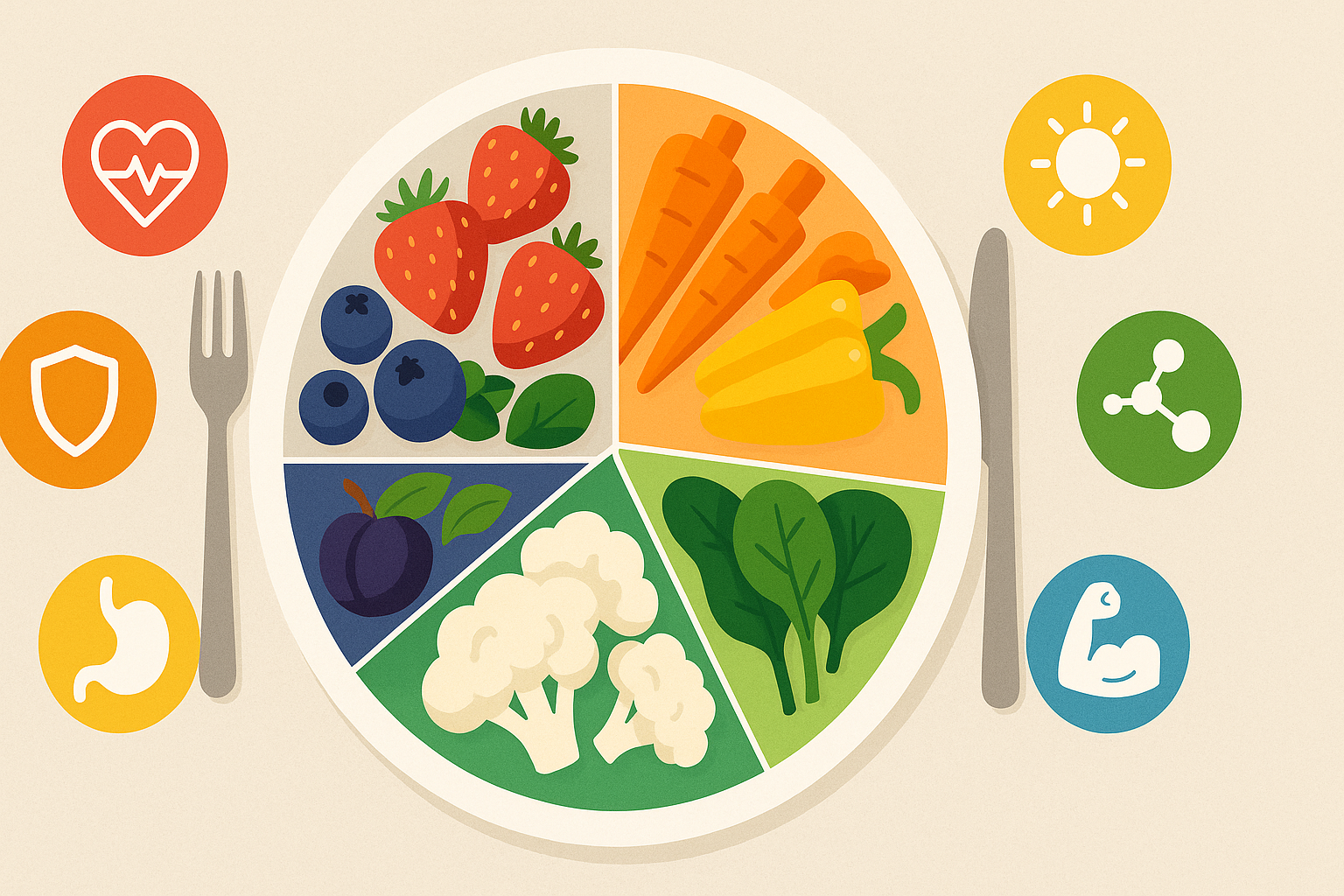
Conclusion: Embracing the Most Healthy Fruits and Vegetables for Everyday Longevity
In the realm of nutrition, the elegance of simplicity cannot be overstated. Science continually affirms that the most profound health benefits come not from isolated compounds or trendy diets, but from consistent intake of the most healthy fruits and vegetables. From berries that sharpen cognition to cruciferous vegetables that support detoxification, these everyday staples are more than food—they are medicine in its most elemental form.
When we prioritize including vegetables in your diet and diversify our choices among different veggies and fruits, we not only meet our nutrient needs but also enhance resilience against chronic conditions. The importance of this approach cannot be overstated. Fruits and vegetables that are good for you names are not confined to exotic species or unfamiliar varieties. They are found in farmers’ markets, grocery aisles, and backyard gardens across the world.
Understanding what vegetables are best for you and making them part of your daily ritual empowers you to take control of your health in a deeply meaningful way. In a world overwhelmed by complex solutions and quick fixes, the enduring wisdom of nature—offering a rainbow of plants—is perhaps the most trustworthy guide of all.
Whether you are looking to prevent disease, improve energy, or simply feel better in your body, turning to the most healthy fruits and vegetables is a decision backed by science, tradition, and common sense. Let your meals reflect this truth, one vibrant bite at a time.
Further Reading:
What are the most healthful vegetables?


